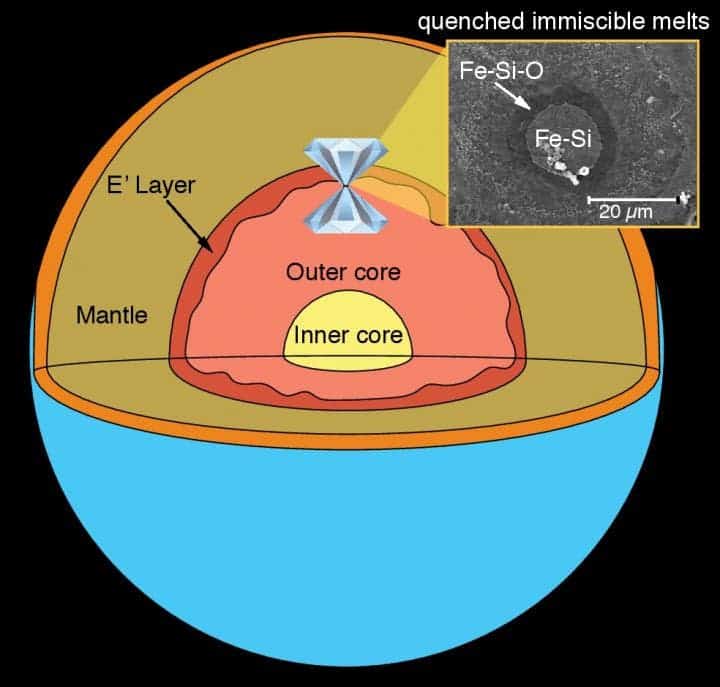What does salad dressing have to do with the core of our planet? Quite a bit, according to a new study, and it’s got a lot to do with the Earth’s magnetic field.

A laser-heated diamond anvil cell is used to simulate the pressure and temperature conditions of Earth’s core. Top right inset shows a scanning electron microscope image of a quenched melt spot with immiscible liquids. Image credits: Sarah M. Arveson / Yale University.
Earth’s magnetic field, produced near the center of the planet, is essential to the survival of all life on the planet, acting as a protective shield from the harmful radiation of solar winds emanating from the Sun. However, our knowledge of Earth’s magnetic field and its evolution is incomplete. A new study finds that this evolution might have a lot to do with a process called immiscibility.
Miscibility is the property of two substances to mix, forming a homogeneous solution. When two substances are immiscible, they don’t mix — think of oil and water or oil and vinegar, for instance. Yale associate professor Kanani K.M. Lee and her team published a new study which suggests that molten iron alloys containing silicon and oxygen form two distinct liquids in the Earth’s core — two immiscible fluids, which just don’t mix together.
“We observe liquid immiscibility often in everyday life, like when oil and vinegar separate in salad dressing. It is surprising that liquid phase separation can occur when atoms are being forced very close together under the immense pressures of Earth’s core,” said Yale graduate student Sarah Arveson, the study’s lead author.
We’ve known for quite a while that the outer core has two major layers. Seismic waves traveling through the outer part of the outer core move slower than in the inner parts. Scientists have several theories explaining what is causing this slower layer, including immiscible fluid. However, until now, there was no experimental evidence to support this idea. In the new study, Lee and colleagues used laser-heated, diamond-anvil cell experiments to generate high pressures and temperatures, mimicking the conditions of the outer core. They found that under these conditions, two distinct, molten fluid layers are formed: an oxygen-poor, iron-silicon fluid and an iron-silicon-oxygen fluid. Because the iron-silicon-oxygen layer is less dense, it rises to the top, forming an oxygen-rich layer of fluid.
“Our study presents the first observation of immiscible molten metal alloys at such extreme conditions, hinting that immiscibility in metallic melts may be prevalent at high pressures,” said Lee.
This is important for the Earth’s magnetic field because most of it is believed to be generated in this outer core as the hot fluid in this layer roils vigorously as it convects.
This still doesn’t completely solve the puzzle of our planet’s magnetic field, but it offers an important puzzle piece.
The study has been published in the Proceedings of the National Academy of Sciences









